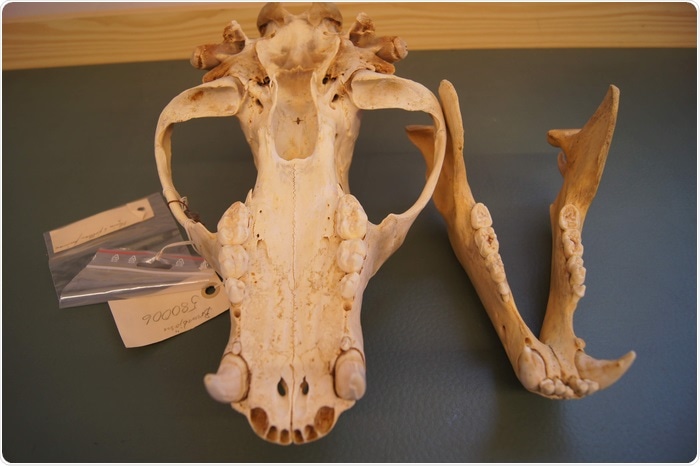Historical museum collections were used by an international group of scientists to analyze the impacts of human-made antibiotics over the complete history of their application. They discovered that the higher use of antibiotics in agriculture and medicine in the 1950s–1990s caused an increase in antibiotic resistance in wild Swedish brown bears.

Researchers used historical museum collections of Swedish brown bears to follow the effects of human-made antibiotics. Image Credit: Katerina Guschanski.
The researchers also noticed a distinct downward trend in antibiotic resistance after the implementation of national policies to control antibiotic use. The research has been published in the Current Biology journal.
Antibiotic resistance is a crucial global health threat, and many individuals die every year due to infections with resistant bacteria. Antibiotics and resistant bacteria, for example, from hospitals, can escape into the environment from wastewater treatment plants and disperse by wind and water over large distances.
From there, the bacteria are picked up by wild animals, which consequently transmits resistant bacteria to humans during hunting or recreational activities. But examining the changes involved in antibiotic resistance in wildlife from the start of antibiotic mass-production in the 1940s was not possible to date.
Recently, researchers utilized specimens from museum collections to examine the changes in the bacterial communities thriving in the mouth of wild animals and preserve as solid calculus deposits on teeth. This dental calculus can persist unchanged for millennia, which enabled the investigation of historical bacterial communities, the microbiomes, from Swedish brown bears as old as 180 years.
We specifically looked for bacterial genes that provide resistance to antibiotics. Their abundance closely follows human antibiotic use in Sweden, increasing in the 20th century and then decreasing in the last 20 years. We also find a greater diversity of antibiotic resistance genes in the recent past, likely as a result of different kinds of antibiotics being used by humans.”
Jaelle Brealey, Study Lead Author and Postdoctoral Researcher, Norwegian University of Science and Technology
Scandinavian brown bears generally live distant from people, but at times approach villages and cities. The scientists anticipate they could identify more antibiotic resistance genes in bears that inhabited more densely populated regions of Sweden. Astonishingly, no such relationship was found.
We found similar levels of antibiotic resistance in bears from remote areas and those found near human habitation. This suggests that the contamination of the environment with resistant bacteria and antibiotics is really widespread.”
Katerina Guschanski, Study Lead Senior Author, Uppsala University
Katerina Guschanski has joint appointments at Uppsala University and the University of Edinburgh.
Sweden was among the first countries to enforce strict control measures for antibiotic usage, implementing a ban on antibiotics in agriculture during the mid-1980s and a national strategic program against antibiotic resistance in medicine in 1995. These measures seem to be effective.
Oral bacteria of bears born after 1995 displayed low antibiotic resistance, although not as low as in bears that survived before humans started antibiotic mass-production. Comparing the microbiomes through time can help unearth these changes.
“Our study highlights once again the value of historical museum collections, like the one at the Swedish Museum of Natural History, as a unique resource for understanding the effect of recent human actions on the environment,” adds Daniela Kalthoff, study co-author and curator of the museum.
Historical microbiomes are employed not only to examine the past but also to observe environmental changes concerning new strategies for lessening pollution and contamination. This research offers a motivating example of how governmental policies can be efficient in reducing a major health threat on a national level. The study reveals that human actions, both positive and negative, have a deep impact on the environment.
Source:
Journal reference:
Brealey, J. C., et al. (2021) The oral microbiota of wild bears in Sweden reflects the history of antibiotic use by humans. Current Biology. doi.org/10.1016/j.cub.2021.08.010.